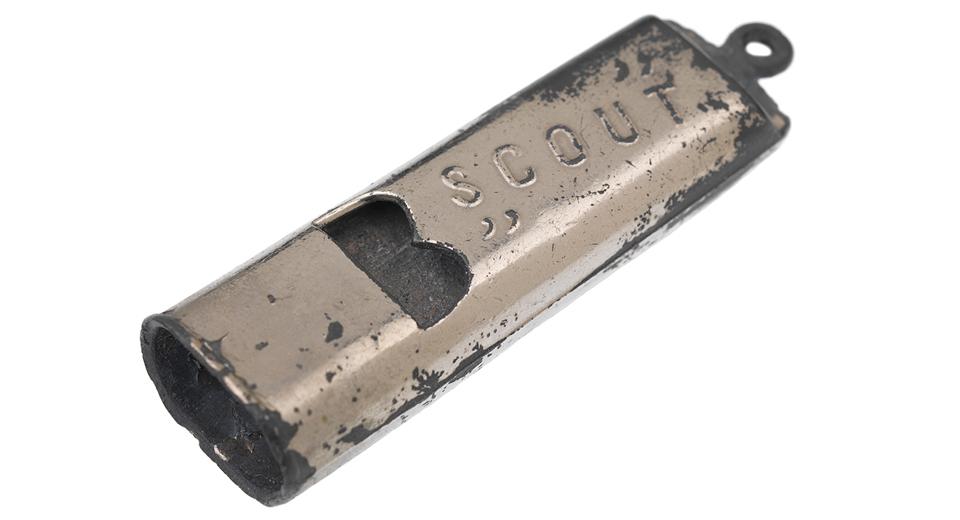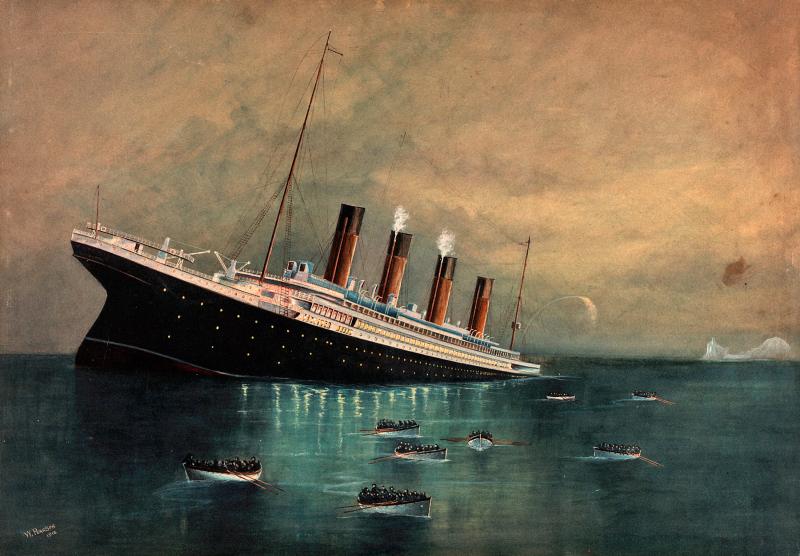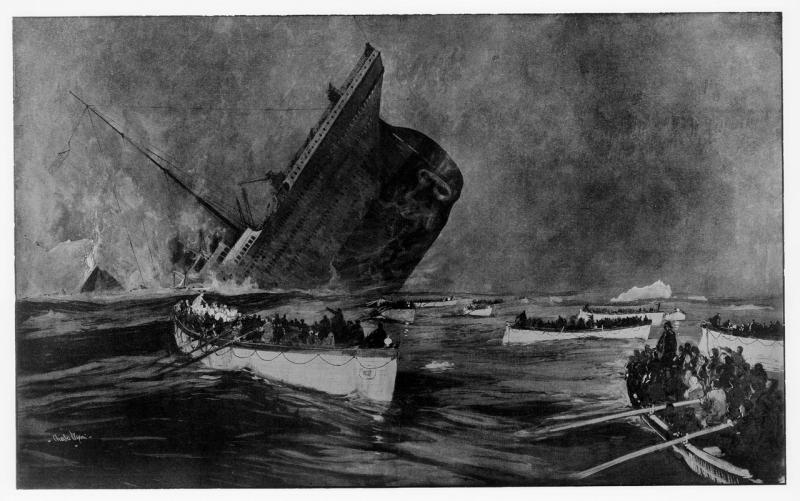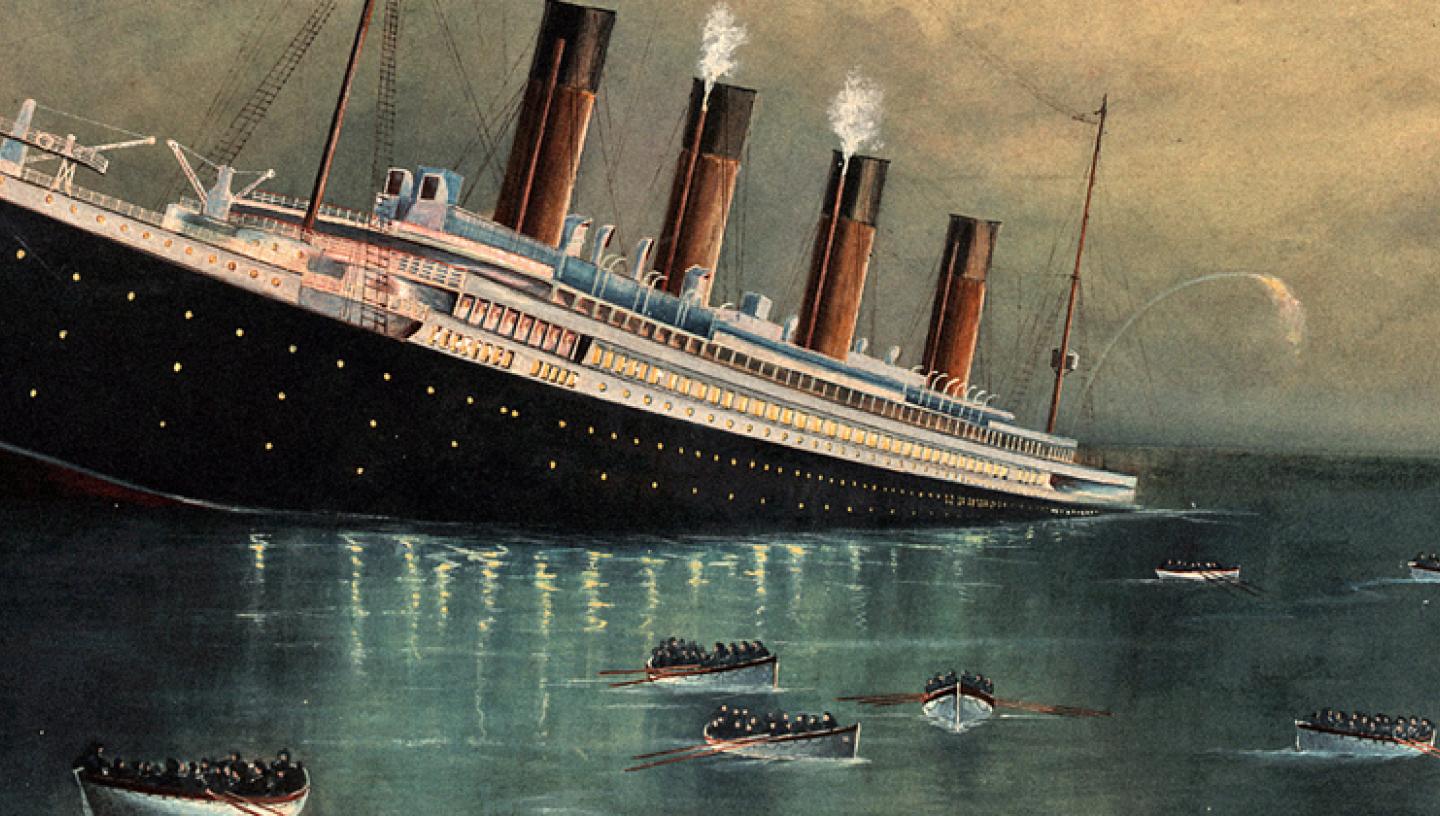
No passenger ship has ever captured the public imagination like the Titanic. Amazing objects in the National Maritime Museum's collection reveal its infamous story.
At 23.40 14 April 1912 RMS Titanic struck an iceberg. By 02.20 the ship had foundered, with a resulting loss of 1,523 people; 815 passengers and 688 crew.
Around 700 survived the disaster (the available lifeboats had a capacity for 1,178), and remarkably a few objects survived the icy waters of the Atlantic Ocean and made it into our collection. Together these incredible objects reveal a story charged with tragedy and emotion.
Titanic Survivors

Robert Douglas Norman's Pocket Watch
This watch belonged to 27-year-old Robert Douglas Norman, who perished in the Titanic disaster. The rusted hands show the exact time the watch was reading when Norman entered the water; seven minutes past three. Clocks and watches on board the Titanic would have been set back on a daily basis to account for the ship's new local time, but at the time the ship sank it seems Norman had not had the opportunity to re-set his watch.
Norman found another passenger, Kate Buss, a place in a lifeboat but he had to remain on board. This gold-cased watch was found among his clothing when his body was recovered from the sea by the vessel 'Mackay-Bennett'.

Edith Rosenbaum's lucky toy pig
This musical pig belonged to Edith Rosenbaum (1879–1975), who boarded the Titanic at Cherbourg. In August 1911 Edith had been seriously injured in a road traffic accident; the musical toy was a gift from her mother to help recuperate. In a televised interview, about 1970, she described how, when asked to evacuate the Titanic, she locked all 19 of her trunks before heading for the lifeboats.
‘I never would have left the ship,’ she recalled, ‘but a sailor came along and he said “say you; you don’t want to be saved, well I’ll save your baby” and he grabbed this pig from under my arm and he tossed it in the lifeboat … when they threw that pig, I knew it was my mother calling me.’
Lillian Winifred Bentham's scout whistle
This whistle belonged to Lillian Winifred Bentham, a 2nd class passenger. Following the initial collision, Lillian did not believe that the ship would sink, but after being convinced by a friend she made her escape in lifeboat 12. She recalls watching the ship break in two, after which the crew of her lifeboat turned back to look for survivors.
"I helped the seamen pull those 20 men into our boat, which already had more than 30 in it. We had to pile them on the bottom of the boat, like so many sacks of flour, because they were unable to do anything to help themselves. The boat was very much overloaded when the task was finished."
They were responsible for rescuing the men who'd survived by balancing on the upturned lifeboat B. She wrapped her fur coat around the young Cecil Fitzpatrick, probably saving his life. In gratitude for her help, Cecil gave her the whistle he had been blowing all night in hope of rescue.
Learn more about Lillian and Cecil's story
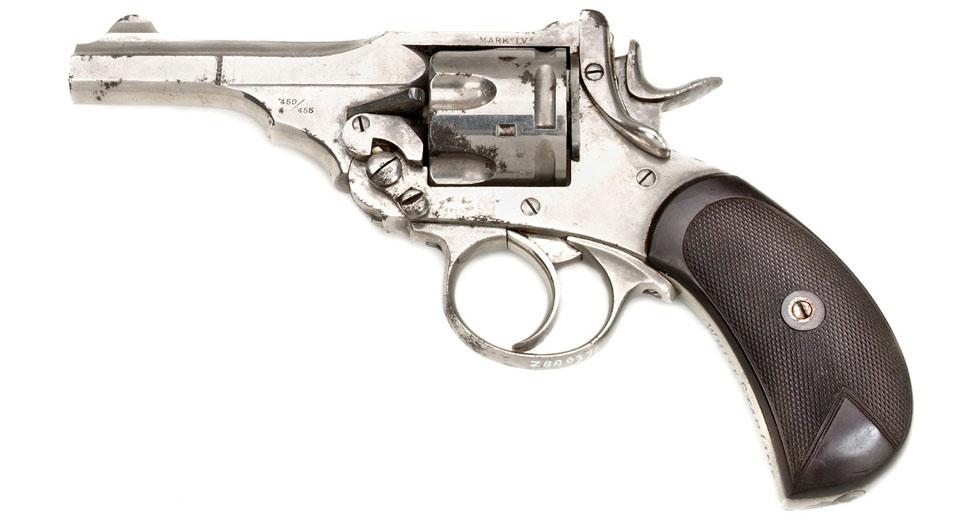
Webley Mark IV revolver
It is said that 5th Officer Lowe of the Titanic used a revolver to quell the crowd of passengers when the ship was sinking (if you've seen James Cameron's 1997 Titanic then you'll probably remember similar scenes). This revolver is inscribed on the butt with the company name 'White Star Line'. Although not Lowe's revolver, he may have used a similar Webley service revolver.
In the wake of Titanic
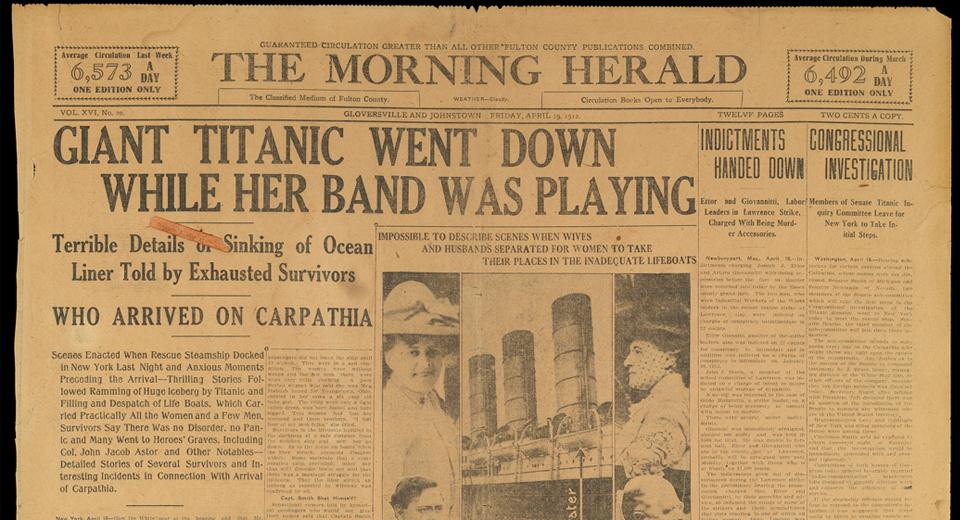
Titanic headline
The Carpathia took three days to reach New York, but due to wireless technology news of the disaster arrived first. Originally it was erroneously reported that the Titanic had survived the collision and was being towed back to port. However, the extent of the disaster soon became clear and journalists fought to be the first to speak to the survivors. The headline, "Giant Titanic went down while her band was playing" ran in The Morning Herald on 19 April.
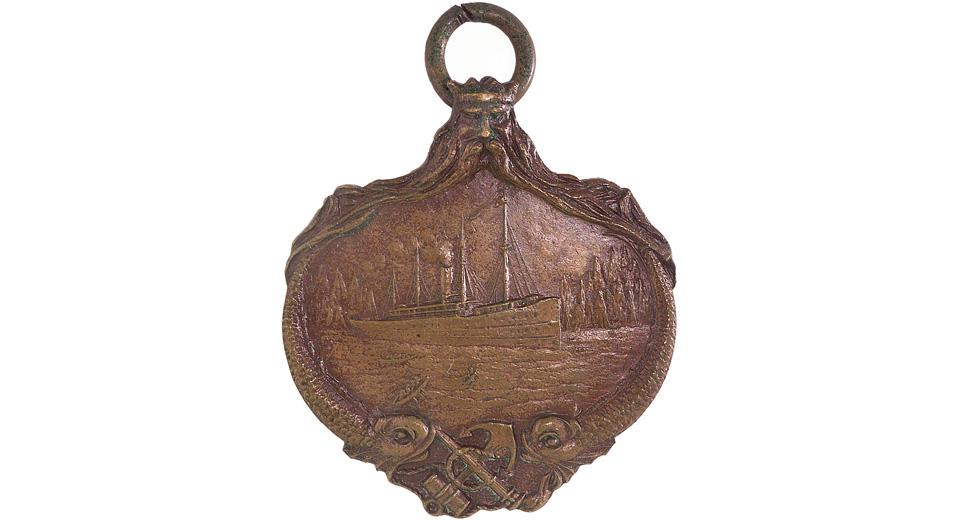
Titanic - Carpathia Medal
The Carpathia was sailing from New York to Europe when it received a distress call from the Titanic. It immediately changed direction and travelled nearly 60 miles to the ship's location where the crew spent four hours rescuing survivors from lifeboats. Medals were awarded by the Titanic Survivors' Committee, chaired by Mrs J.J. 'Molly' Brown.
Find out about the spacecraft nearly named after Molly Brown
The medals include the inscription: "Presented to the captain officers and crew of RMS Carpathia in recognition of gallant and heroic service from the survivors of the SS Titanic".
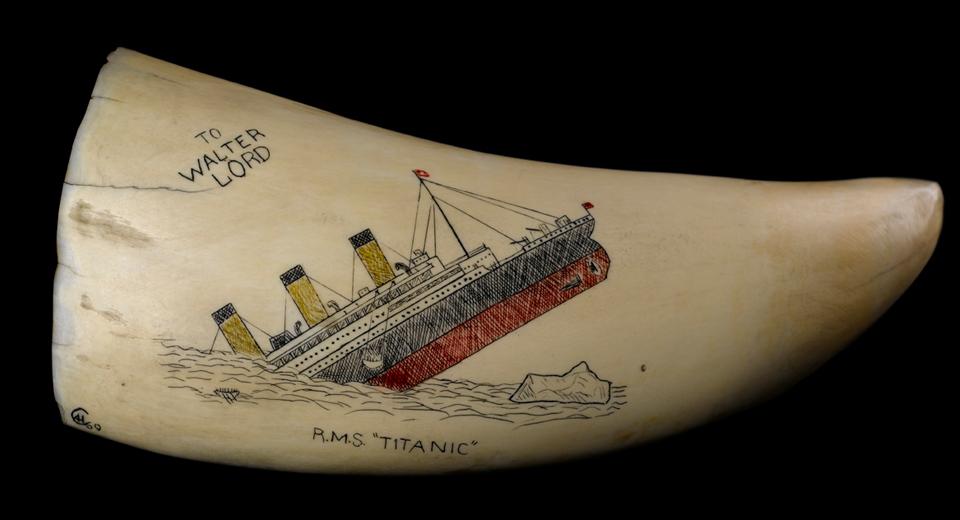
Walter Lord Titanic Engraving
The story of the Titanic has gripped the public imagination for over a century. In the immediate aftermath of the disaster the world became awash in songs, poems, books and paintings about the ship. The first film about the disaster, Saved from the Titanic, was released within a month. Since then A Night to Remember and James Cameron's Titanic have cemented the story in the public consciousness. The above engraving was given to Walter Lord, author of A Night to Remember.
Find out about The Titanic in popular culture
Watch our talk about the Titanic objects in our collection
Find out more about The Prince Philip Maritime Collections Centre
These objects are part of the National Maritime Museum Collection and are not guaranteed to be on public display.
Find out more about these objects and how you can see them on collections online.
